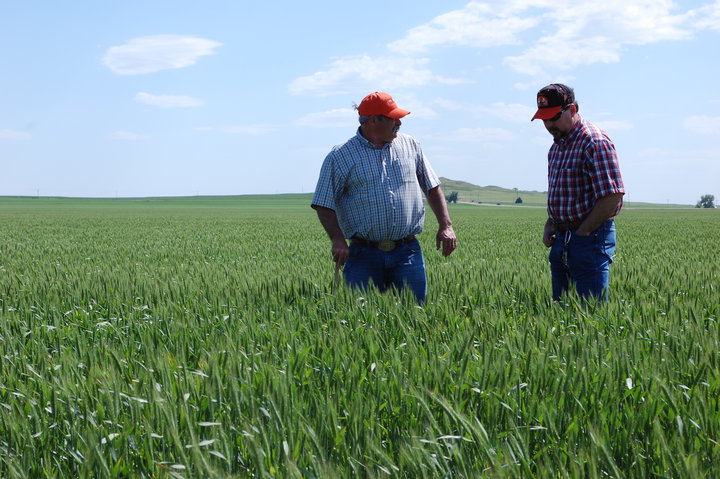
Agricultural News
First Day of Kansas Wheat Crop Tour Predicts Average Crop in Central Kansas
Wed, 05 May 2010 4:07:06 CDT
 The average eyeball estimate of the Kansas hard red winter wheat crop was higher than what scouts calculated using the Wheat Quality Council's formula on the first day of the Hard Red Winter Wheat Crop Tour.
The average eyeball estimate of the Kansas hard red winter wheat crop was higher than what scouts calculated using the Wheat Quality Council's formula on the first day of the Hard Red Winter Wheat Crop Tour.
"You just get a feeling," said crop adjuster David Reed. "You look at the crop, and you know. What I'm guessing is that it's the weather." Even as the Kansas Wheat Crop Tour cranks up- scouts have walked across a lot of fields in Oklahoma in the last few days- and they will report on Wednesday morning in Oklahoma City- the picture hear- courtesy of the Oklahoma Wheat Commission- is of OSU Extension Specialist Roger Gribble and Oklahoma Wheat Growers Executive Director Tim Bartram examining a wheat field in the west central part of the state.
The Wheat Quality Council's day one average estimate was 40.7 bushels per acre, which is lower than last year's 41.3 bpa average and surprised many of the farmers, millers, agronomists and media representatives on this year's tour. It's the average yield of 213 fields across northern Kansas.
The stretch of land along Kansas Highway 18 in Graham, Sheridan and Thomas counties surprised Oklahoma Wheat Commission Executive Director Mike Schulte. "And I think those numbers (USDA acreage) are right on from what we've seen this afternoon, especially when we get to the western part of the state. We're seeing a lot of corn," he said.
Besides fewer acres of wheat, everything looked favorable for the crop, Schulte said. Stripe rust was more common in the counties closer to Manhattan, Kan., where the tour kicked off Tuesday morning. While the usual suspects -- leaf rust, tan spot, powdery mildew -- were all identified, their low-profile presence shouldn't cause major problems unless more wet, cool weather sets in.
"I think those areas received a large amount of moisture, and in those lower-lying fields nitrogen deficiency might be an issue. It looked like some of the wheat was still sitting in water," Schulte said. Still, overall, Schulte said things look pretty favorable for wheat.
Click on the Listen Bar below for Mike Schulte's full report from Day One of the Kansas Wheat Crop Tour.
WebReadyTM Powered by WireReady® NSI
Top Agricultural News
More Headlines...



















